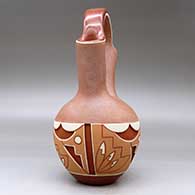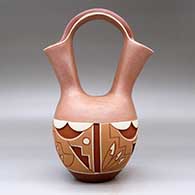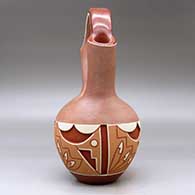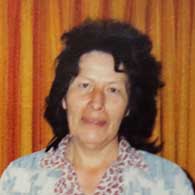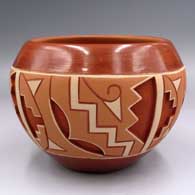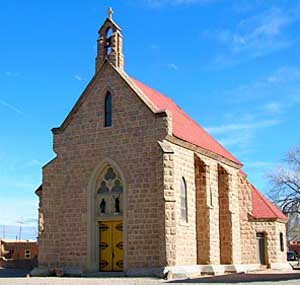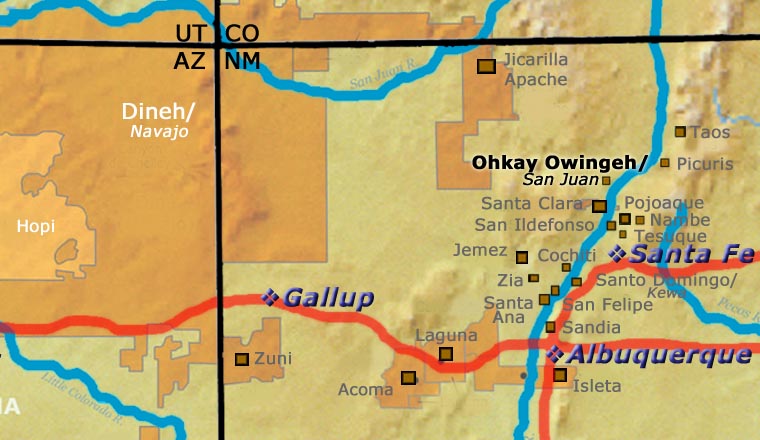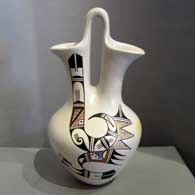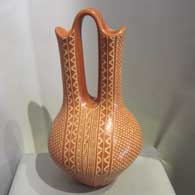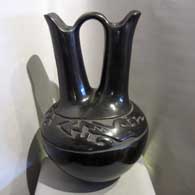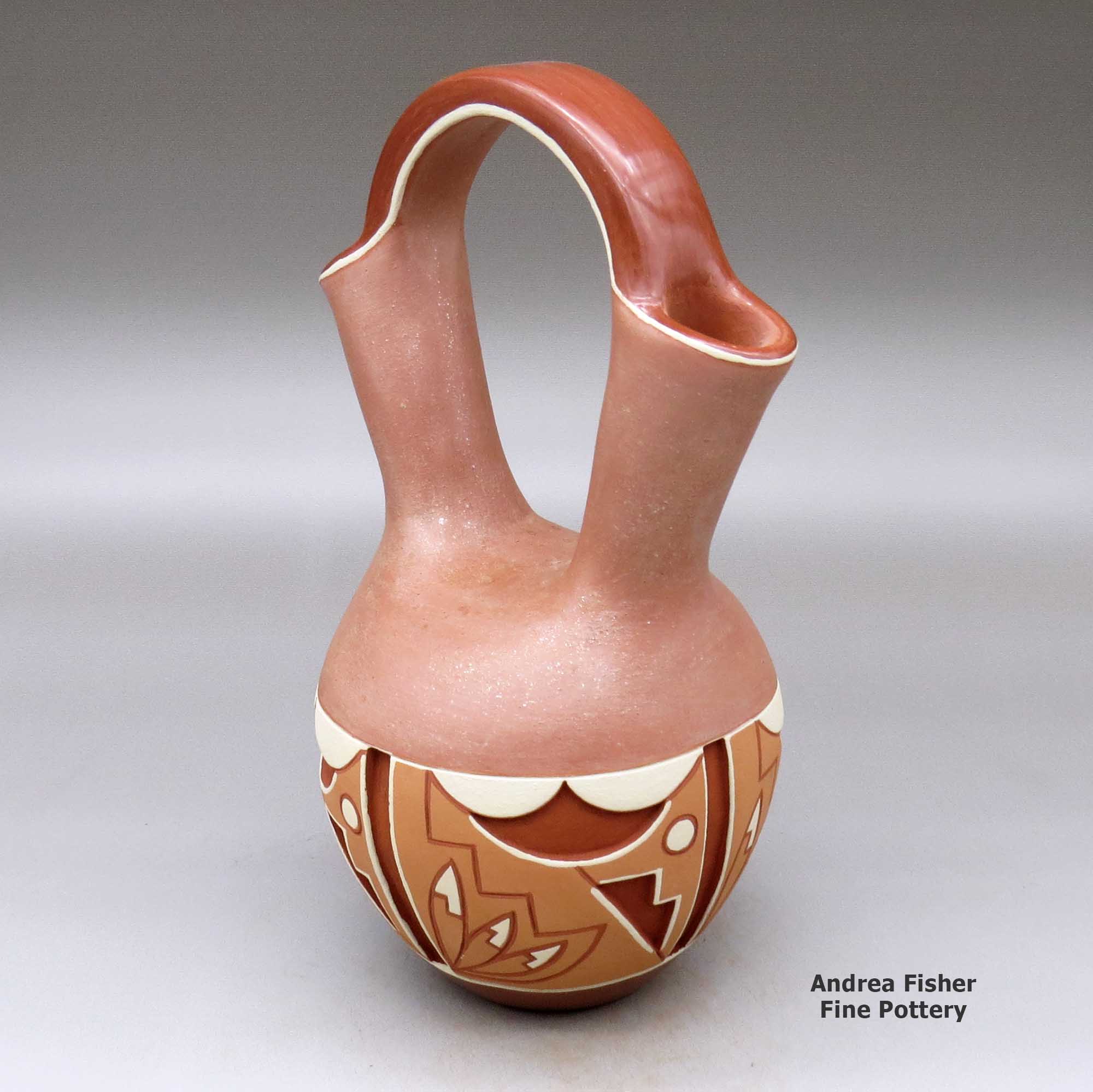
Rosita de Herrera, Ohkay Owingeh, A polychrome Potsuwii-style wedding vase carved and painted around the body with a four-panel feather, kiva step and geometric design, plus micaceous clay above and below the carved band
Rosita de Herrera
Ohkay Owingeh
$ 1400
shsj4f312
A polychrome Potsuwii-style wedding vase carved and painted around the body with a four-panel feather, kiva step and geometric design, plus micaceous clay above and below the carved band
6 in L by 8.25 in W by 12.5 in H
Condition: Very good with some minor stains
Signature: Rosita De Herrera San Juan Pue. N.M.
Ohkay Owingeh
$ 1400
shsj4f312
A polychrome Potsuwii-style wedding vase carved and painted around the body with a four-panel feather, kiva step and geometric design, plus micaceous clay above and below the carved band
6 in L by 8.25 in W by 12.5 in H
Condition: Very good with some minor stains
Signature: Rosita De Herrera San Juan Pue. N.M.
100 West San Francisco Street, Santa Fe, New Mexico 87501
(505) 986-1234 - www.andreafisherpottery.com - All Rights Reserved
(505) 986-1234 - www.andreafisherpottery.com - All Rights Reserved
Tomasita Reyes Montoya Family Tree
Disclaimer: This "family tree" is a best effort on our part to determine who the potters are in this family and arrange them in a generational order. The general information available is questionable so we have tried to show each of these diagrams to living members of each family to get their input and approval, too. This diagram is subject to change should we get better info.
- Tomasita Reyes Montoya (1899-1978) and Juan Reyes Montoya
- Dominguita Naranjo (Sisneros)(1942-) and Juan Sisneros
- Jennifer Sisneros and Alfred E. Naranjo (Santa Clara)
- Alfred J. Naranjo
- Jeannette Teba and Steven Teba Sr.
- Steven Teba Jr.
- Veronica Teba
- Jennifer Sisneros and Alfred E. Naranjo (Santa Clara)
- Rosita de Herrera
- Norman de Herrera
Some of the above info is drawn from Pueblo Indian Pottery, 750 Artist Biographies, by Gregory Schaaf, © 2000, Center for Indigenous Arts & Studies
Other info is derived from personal contacts with family members and through interminable searches of the Internet.

